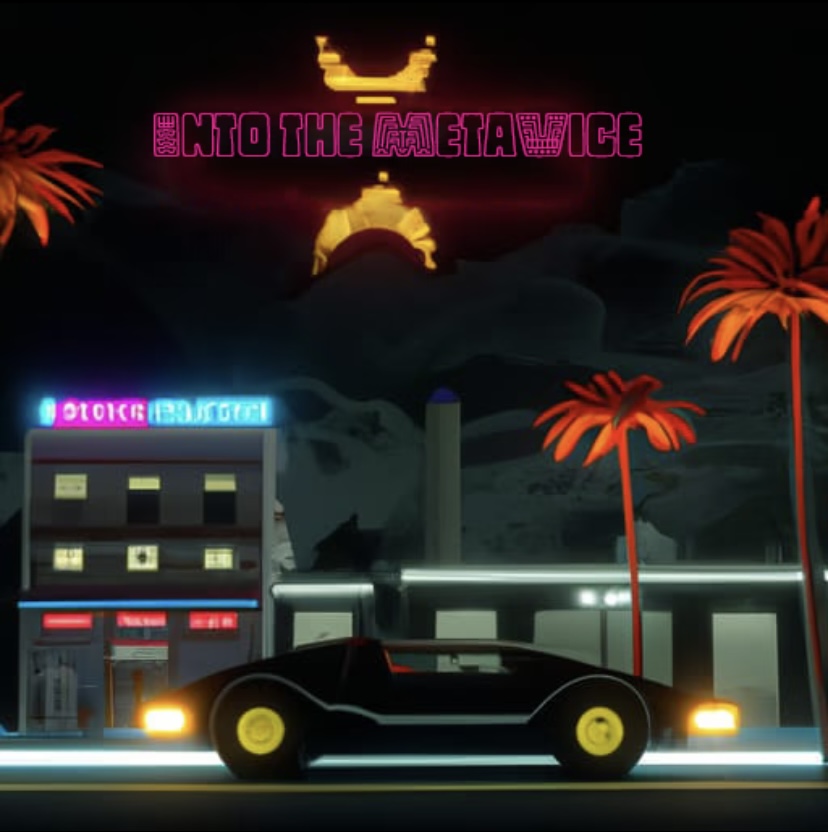Brenda: How do you go from this tranquility to that violence?
Sonny: I usually take the Ferrari
What is the best music video that you have (likely) never seen? Well, it runs from 40:54 – 45:34 of Miami Vice S1E7: No Exit. It tells the story of an arms deal for Stinger missiles set to Phil Collins’ brilliant “I Don’t Care Anymore” and runs for the entirety of the track, with no fade outs for dialogue. It is a perfect, self-contained, “short story” that encapsulates much of what makes Miami Vice such a cultural force. Duran Duran’s “Rio” is another iconic video of the era, all white suits, pastel shirts, sun, sand, and yachts, and it is awesome, and perfectly evocative of the early 80s of New Wave, synth-pop, and of course, the MTV age. “Rio” landed in the Summer of ’82; Vice debuted in September ’84, and while it is tempting to call Vice a product of the MTV era, we will argue that instead they are converging currents of technology, fashion, music, and the changes being unleashed upon urban America in the mid 80s. In short, a few of our favourite things here at CC, and in their own way, timeless. The most memorable clip from that first season is of course the iconic “In the Air Tonight” scene at the end of S1E1, all dark Miami, Bernay’s Cafe, Ferrari, Armani: a collage of images and sounds that converged to create an entirely new whole.
Miami Vice may today be predominantly remembered for its style, but how we define a cultural movement or work of art says as much about the consumer as the producer. What then, is this style? It is the music, the neon, the South Beach architecture, the clothes, the cars. It is also the texture: the unhappy endings, the drug dealer escaping, the cocaine money highlighting the growing income inequality and increasingly violent crime that would come to define the times. In fact, what we remember of the look of the 80s was created in the world of Miami Vice. MTV was the distribution platform, and Vice was the creative outlet. Together, they were force multipliers in the creation of how we remember the decade, particularly in the first two seasons of the show.


The typeface in the Miami Vice logo is Broadway (Regular and Stencil), designed by Morris Fuller Benton in 1927. It is interesting that a popular Art Deco styling became synonymous with the 80s, but such are the powers of cultural currents. Another link to the 20s lives in that original Vice poster, as it is so evocative of the Scribner’s cover art for The Great Gatsby: an upside down image, situating Vice within the context of a broken American Dream like that of Gatsby. There are, of course, many parallels of the new money of the Roaring 20s to the Cocaine Cowboys of 1980s Miami. Perhaps most notable here though are the judging eyes of Dr. TJ Eckleburg, that “look out of no face”* echoed in the lights of the Ferrari, judging the glitz and glamour that try but ultimately fail to hide the sleaze, the death, and the detritus of the drug wars. It is a very clever construction, placing our heroes squarely into a story that is both new and old; what Glenn Frey will call the politics of contraband, but is more simply just get rich or die trying. The transition from New York to Miami makes sense – both at the time as a part of the rise of the new South, but also resonant today, as Florida is increasingly a lead actor in American life.
* Fitzgerald, F. Scott, The Great Gatsby (New York: Charles Scribner’s Sons, 1925) Ch.2.2
The technology aspect is something we now take for granted, but the synthesizers that would come define the sound of the early and mid-80s, were new, particularly the Fairlight CMI. Atmospheric and brooding, Jan Hammer’s electronic score set the stage for a collection of hit music that situated the show at the centre of mid-80s culture. We would be remiss not to mention that it also places that musical backdrop in familiar degen territory, where art is code and code is art. In what would surely become familiar to Larva Labs, this intersection of technology and creation allowed for a freedom of expression that was as much a part of the show as any plotline.
The clothing was completely new, t-shirts under linen suits, forever freeing us from having to wear socks with shoes, and unleashing pink into men’s wardrobes, which looked particularly good paired with a Rolex President. Funny that. The Miami Vice look is so distinctive that it might as well be a flapper dress, situating the action in its own world, articulating a look that frankly needs to come back. Some of us here at CC live in Singapore, so the climate works…and, well fuck it: we will bring it back here ourselves – no time like the present, right? By the way, that goes for both Crockett and Tubbs, as double breasted suits are now all the rage again, thanks in part to Kingsmen, but also because they are just that little bit more detailed. Ricardo Tubbs is another example of New York transplanted to Florida: chilling, but still Tough, Unique, Bad, Bodacious, Sassy.

YouTube is now the most popular music service in the world, and that means we watch much of our music. MTV didn’t know it, but they created the delivery system for how we now consume much of our pop culture. Stylistically, the look and feel of Vice was part and parcel of the content, as the stories wrapped themselves in the music and colours, in the same way that a music video does. Nowhere is this more pronounced than Smuggler’s Blues (S1E16) where Glenn Frey’s track provides title, plot, singer, and actor. The music provides the rhythm, but the overall style provides the architecture of the show. It is Glenn Frey, and it is the music. Of course it is also the Art Deco buildings contrasted with the derelict structures of Miami, the ones far away from the beaches and the surf, in what could be anywhere’s forgotten inner-city. Art Deco was meant to symbolize luxury, technological progress, and style, but the costs of Art Deco made its popularity fall away with the Depression. In that sense, the setting evokes the Reagan years of plenty for some, but also an encroaching sense that the point of money was to make more money – in this context the “dirty” money of drug money, underlined with a common theme that governments were complicit in drug trafficking. As Frey sang:
It’s propping up the governments in Colombia and Peru
You ask any DEA man, he’ll say “There’s nothin’ we can do”
From the office of the President
Right down to me and you, me and you
Just like the music videos of MTV, the settings also exist in motion, with Crockett’s 1972 Ferrari Daytona Spyder 365 GTS/4 serving as the literal and figurative carrier of the culture. Later, this would be a cocaine-white Testarossa, but we really love that Daytona. Michael Mann and the production team rebuilt sections of South Beach for the show, a South Beach that we know of in part because of Vice. Today it might be Crypto heaven, but then it was a fading beach town. What was past is prologue, and today’s Miami lives as a copy of Vice’s Simulacra of Miami. It is perhaps this that makes Vice such an important cultural force: stylistically we remember the 80s as Miami Vice. It would be tempting to call the show a period piece, but that is an artistic disservice, as Vice helped create the period, and helped build Miami, the endless river of drug money mixing with the Mann-ian vision of Vice city, building a new South Beach. Do you think these buildings were pink before Miami Vice?
Turning back to the music, it is remarkable that so many of the most popular songs of the time were woven into the fabric of the show. We may watch and listen now through the lens of nostalgia, but when the show ran the music was current and it was carefully curated, blurring the lines between that which ran on MTV as videos, and that which provided the soundtrack to the stories on the screen, each track in the show its own short story or poetic montage. As with “I Don’t Care Anymore,” it was often better when a part of Vice than the actual video! An attempt at a complete Miami Vice playlist gives a sense of the depth of the cross-cultural engagement that the show carried. It would be hard to find any other selection of pop culture so closely attuned to its era. Maybe The O.C. gets close, but that does not exist in so specific a time.
There has been a recent renaissance for Miami Vice, but it was so influential that it is difficult to describe just how different it was from popular culture when it ran. It exists now as a product of the video era, but we have tried to present it as something that wrote its own era as it ran: its own Clotho, Lachesis, and Atropos, measuring out its timeline in real time. The growing understanding of video as a medium helped inform the viewer of the pacing of the episodes, while Vice’s style reinforced the cultural importance of this relatively new visual merging of song and story. It was new, as MTV was new, and having these two currents coming together set a new standard for how creators could present ideas. If videos were the short story, the great Vice episodes were the novels, and together they forged a new artistic language. Vice was immersive, but was 80s tech-immersive. It is always easier to see these patterns and currents when we look backwards, and something else will emerge to become an iconic cultural force that defines our present. Recently, Ready Player One hinted at how that might work, and maybe some idea of the metaverse will immerse us into its arms in real time. Or maybe not. In the meantime do yourself a favour: watch No Exit. We dare you to find a better video.

